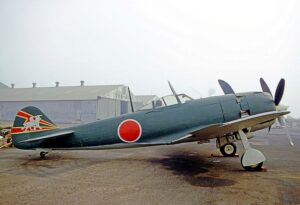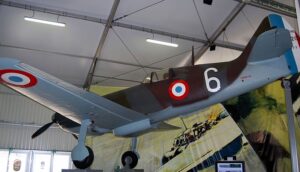Time Period: World War II
Country of Origin: Japan
Type: Bomber Aircraft
Manufacturer: Nakajima Aircraft Company
Nakajima B5N Aircraft Overview
For the majority of World War II, the Imperial Japanese Navy’s (IJN) go-to carrier-based torpedo bomber was the Nakajima B5N (Japanese: B5N, Allied reporting name “Kate”).
Despite being significantly faster and more capable than its Allies, the British Fairey Swordfish and Fairey Albacore torpedo biplanes, the American Douglas TBD Devastator monoplane, and the American Douglas TBD Devastator monoplane (the U.S. Navy’s first all-metal, carrier-borne monoplane of any type with retracting gear), the B5N was close to becoming obsolete by 1941. However, because the B6N’s construction was delayed, the B5N continued to function throughout the whole war.
Early in the Pacific War, the B5N saw remarkable success in the engagements of Pearl Harbor, Coral Sea, Midway, and Santa Cruz Islands when flown by well-trained IJN aircrews and as part of well-coordinated attacks.
Nakajima B5N Specifications
- Crew: 3
- Length: 10.3 m (33 ft 10 in)
- Wingspan: 15.518 m (50 ft 11 in)
- Height: 3.7 m (12 ft 2 in)
- Wing area: 37.7 m2 (406 sq ft)
- Airfoil: root: NN-5 mod (16%); tip: NN-5 mod (8%)
- Empty weight: 2,279 kg (5,024 lb)
- Gross weight: 3,800 kg (8,378 lb)
- Max takeoff weight: 4,100 kg (9,039 lb)
- Powerplant: 1 × Nakajima Sakae 11 14-cylinder air-cooled radial piston engine, 750 kW (1,000 hp) for take-off. 720 kW (970 hp) at 3,000 m (9,843 ft).
- Propellers: 3-bladed constant-speed metal propeller.
Nakajima B5N Performance
- Maximum speed: 378 km/h (235 mph, 204 kn) at 3,600 m (11,811 ft)
- Cruise speed: 259 km/h (161 mph, 140 kn) at 3,000 m (9,843 ft)
- Range: 978 km (608 mi, 528 nmi)
- Ferry range: 1,991 km (1,237 mi, 1,075 nmi)
- Service ceiling: 8,260 m (27,100 ft)
- Rate of climb: 6.5 m/s (1,280 ft/min)
- Time to altitude: 3,000 m (9,843 ft) in 7 minutes 40 seconds
- Wing loading: 100.8 kg/m2 (20.6 lb/sq ft)
- Power/mass: 0.196 kW/kg (0.119 hp/lb)
Nakajima B5N Armament
- Guns: 1 × 7.7 mm Type 92 machine gun ‘Ru’ (Lewis) in rear dorsal position, fed by hand-loaded drum magazines of 97 rounds. A number of B5N1s were equipped with 2 × 7.7 Type 97 machine guns in the wings.
- Bombs: 1 × 800 kg (1,760 lb) Type 91 torpedo or 1 × 800 kg (1,760 lb) bomb or 2 × 250 kg (550 lb) bombs or 6 × 60 kg (132 lb) bombs
Nakajima B5N Image Gallery
More Nakajima Aircraft

Nakajima J1N “Gekko”
The Nakajima J1N “Gekko” is a twin-engine aircraft used by the Japanese Imperial Navy during World War II.

Nakajima Ki-84 “Hayate”
The Nakajima Ki-84 was a Japanese single-seat fighter aircraft used by the Imperial Japanese Army Air Service during World War II.

Nakajima Ki-43 Hayabusa
The Nakajima Ki-43 Hayabusa was a single-engine fighter aircraft used by the Imperial Japanese Army Air Service in World War II.

Nakajima A6M2-N
The Nakajima A6M2-N was a single-crew floatplane aircraft created in 1941 and based on the Mitsubishi A6M Zero Model 11.










